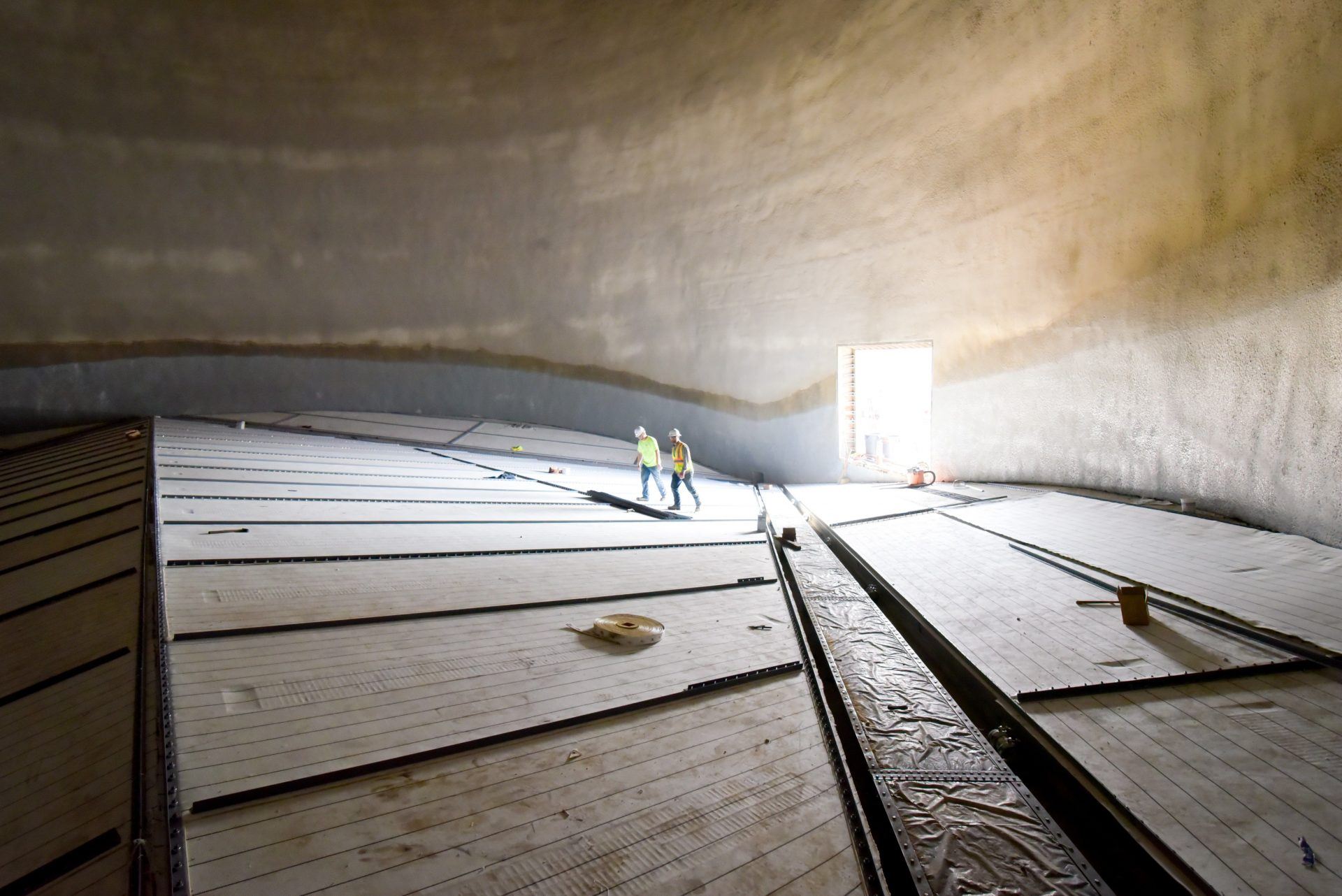Scope of Work
| Domes | Height | Diameter |
|---|---|---|
| #3781 | 138ft | 125ft |
| #3781 | 42.1m | 38.1m |
Selecting a DomeSilo was a proactive measure for concrete producer Ozinga.
“It is our view that the country is in the early stages of an expansionary period, creating extra demands on our raw materials,” Ozinga President Marty Ozinga IV said. “Storage helps us manage our supply chain to ensure reliable and economical sources of quality materials.”
The company contracted with Dome Technology to build a DomeSilo™ in Chicago, Illinois, that is 125 feet in diameter and 138 feet tall and can store 50,000 metric tons of cement. Product is loaded pneumatically via a barge unloader, and dual Fuller-Kinyon pumps convey cement from the dome to two day bins.
Ozinga management considered slip-form concrete silos, bolted steel silos and flat storage for the Chicago site, but “we determined that the dome storage was the most economical and efficient form of storage for the amount of material we wanted to store and the amount of annual put-through,” Ozinga said.
Dust-collection systems were installed, and level monitoring allows site managers to keep tabs on the amount of stored product.
According to Ozinga, the company had two main criteria for the new dome. One was a location with ample access to different modes of transportation including the river, rails, the Great Lakes and the highway. The selected Chicago site met these needs and boasted space for further expansion.
The other non-negotiable was redundancy, an advantage made possible by custom pneumatic transport and reclaim systems. FLSmidth was contracted to provide a Docksider Model DS-1 barge unloader, a Ful-Floor fluidized reclaim system and a Fuller-Kinyon transfer system.
According to FLS Pneumatic Transport systems and products Sales Manager David Bergenstock, the Docksider DS-1 barge unloader is a pneumatic system that will draw cement from 1500 DWT river barges by vacuum and convey it to a filter receiver above the dome. From there, the cement can be diverted either to the dome or to the truck loadout silos at a capacity of 360 metric tons per hour.
The double dihedral, fully fluidized floor will discharge product on two sides of the dome. An obvious advantage is the need for a reclaim tunnel is eliminated as product is fed to the side, not the center, and all the equipment is stored outside, freeing up room inside for storage. An access tunnel is built under the peak in the floor, and aeration pipe can be run through this tunnel, drastically reducing penetrations to the exterior of the DomeSilo wall where pipe would otherwise run around the perimeter. This reduced number of access points on the dome’s exterior means fewer possible points for moisture entrance.
A fluidized floor allows companies to aerate different areas of the floor at different times, so fluidization is especially even and does not asymmetrically load the dome structure. Although a dome can handle asymmetric loads, symmetrical loading is preferable economically.
Because fluidized floors are operated by multiple valves and blowers, they’re low maintenance, and the risk of breakdown is lower than that associated with mechanical reclaim equipment.
The partnership of Dome Technology and FLS yielded a seamless, flexible facility, and the equipment Ozinga chose shows that the company is committed to advanced operations, Dome Technology project manager Brent Toone said.
“The fact that Ozinga is using the barge unloader and the fluidized FulFloor system and incorporating that into a 50,000 metric ton dome — all those items are really top-of-the-line components of the entire system,” Toone said.
According to Ozinga’s president, the dome will help the company secure reliable and economical sources of raw materials — a capability that will help the company continue to distinguish itself from the competition.
“In the long run, this (dome) will help secure the future of Ozinga as an independent, American-owned and operated family business,” Ozinga said.







